Aquitaine, Beynac, Beynac-et-Cazenac, Butterfly Cottage, Carmensac, Castelnaud, Castelnaud-la-Chapelle, castle, cave, chateau, cliff, Cro-Magnon, Domme, Dordogne, Font de Gaume, France, Gabare Norbert, history, Josephine Baker, La Roque-Gageac, Lascaux, Les Eyzies de Tayac, Les Hirondelles, Malartrie, medieval, Milandes, Montignac, Mulberry Tree Villa, Périgord, prehistory, Puymartin, Reignac, Renaissance, river, Rouffignac, Saint-Cyprien, Sarlat-la-Canéda, Tower Gate, travel, vacation, Vézère, voyage
A Voyage Through History on the Dordogne (English Version)
(Cliquez ici pour lire une traduction de cet article en français: https://philhaber.com/2013/10/01/un-voyage-a-travers-lhistoire-sur-la-dordogne-version-francaise/.)
(Revised 2015). Recently I traveled to the Dordogne region for a third time, the first having been eleven years ago and the second two years ago. A visit to this area (also known as Périgord) is a voyage through history and even prehistory. Medieval and Renaissance castles look down on the river at several points, while literally hundreds of others dot the region. The Dordogne and its tributary, the Vézère, are lined in many areas with towering limestone cliffs honeycombed with caves that often provided shelter for village residents during the wars of the Middle Ages. Some of these caves, such as those at Lascaux, Rouffignac and the Font de Gaume, contain pictures of animals such as woolly mammoths, bison, bulls, horses and reindeer that were drawn, painted or carved onto the interior walls by Cro-Magnon people 12,000 to 18,000 years ago.
While an automobile is a necessity to get to everything worth seeing in this area, one should not miss an opportunity to ride down the Dordogne itself on a boat. Kayaks and canoes are very popular and can be rented at many locations along the banks of the river. In addition, at the village of La Roque-Gageac, you can book a one-hour ride on a Gabare Norbert, which will take you down the river to Castelnaud-la-Chapelle and back, with a captain who doubles as a tour guide. The Gabares Norbert are replicas of the flat-bottomed sailboats that were used during the 18th and 19th centuries to transport goods along the Dordogne and other rivers in France. These gabares, however, are fitted out with motors that assure a smooth and reliable ride. Here is a photo of a Gabare Norbert about to arrive back in the dock at La Roque-Gageac (you may click on any photo in this article to see a larger version):
The boat leaves from La Roque-Gageac, one of “Les Plus Beaux Villages de France”:
On the way downstream from La Roque-Gageac, the Gabare Norbert glides past the Renaissance-style Château de La Malartrie, seen on the left side of the photo above. Here is a closer view of the château:
The Gabare Norbert then continues downstream to the village of Castelnaud-la-Chapelle:
The village is dominated by the Château de Castelnaud. Built in the 12th century, this castle was a focal point of the Hundred Years War (1338-1453), during most of which it was occupied by English forces. Here is a closer view of the castle from inside the village itself:
From the top of the Château de Castelnaud, there is a marvelous view down the Dordogne to the village of Beynac-et-Cazenac, which is dominated by the Château de Beynac:
The Château de Beynac was built during the 12th century by the barons of Beynac, one of whom, during the period 1189-1199, was Richard the Lionheart. The château was another focal point of the Hundred Years War. Located about two miles downstream from the Château de Castelnaud and on the other side of the river, the Château de Beynac was occupied by the French. It is perched on top of a towering cliff and dominates its section of the river:
Not far from the Château de Castelnaud is the Château des Milandes. Built during the 15th century, it was more recently the home of the American singer, dancer and actress Josephine Baker who, unable to achieve success in her own country on account of her race, became immensely popular in France:
A short distance upstream from La Roque-Gageac is the village of Domme, perched at the top of a cliff overlooking the Dordogne, also a member of “Les Plus Beaux Villages de France”. At the edge of the cliff, close to the appropriately named restaurant “Le Belvédère,” is a terrace from which there is a spectacular view of the river and its valley:
One entrance to Domme is through the imposing Tower Gate, which served as a prison for 70 Knights Templar during the 14th century:
Here are two beautiful medieval buildings found in the Place de la Rode in Domme. The building on the right, built in 1282, which now contains a high quality jewelry shop, was formerly the “maison du batteur de monnaie du Roy Philippe III le Hardi” (“house of the minter of coins of King Philip the Bold”), as one can see from an inscription chiseled into a block of stone on the exterior wall of the building. (Philip the Bold was king of France from 1270 to 1285.) The building on the left is now a restaurant and café called “Le Médiéval.”
In Domme, I also purchased some beautiful hand-made pieces of faïence at the boutique “Les Coquelicots.”
As indicated above, kayak and canoe rides on the Dordogne are very popular and offer excellent opportunities for photography. Here is a shot of La Roque-Gageac taken from a canoe on the river:
The spectacular sights in the Dordogne region are not by any means limited to the banks of the river itself. The area is filled with hundreds of castles and other medieval and Renaissance sights, and in fact is popularly known as the “Land of 1,001 Castles.” One of these is the Château de Puymartin. Built during the 13th century, the castle was destroyed during the Hundred Years War and rebuilt in the 15th century. It has been owned and occupied by descendants of the same family since 1450.
Nearby is the town of Sarlat-la-Canéda, the principal town in this area. The medieval center of this town has been carefully preserved:
Sarlat is full of history. The sign on the house shown in this photo states that Etienne La Boétie was born here in 1530. La Boétie was a writer, diplomat, judge and a founder of modern French political philosophy, but is probably best known today as the famous friend of the philosopher Michel de Montaigne.
On Saturdays, there is a large and very popular market in Sarlat:
Sarlat’s beauty is not limited to daytime. At night, Sarlat is perhaps the only French town still lit entirely by gas lamps:
Perhaps the strangest of all the castles one can find in the Dordogne region is the Maison Forte de Reignac:
Built into the side of a limestone cliff close to the Vézère River, the façade hides vast interior spaces on multiple levels. Beginning about 700 years ago, it was constructed and occupied as a baronial castle, and its many rooms are today still beautifully outfitted with period furniture and furnishings. But there is also copious evidence that the site was occupied by Cro-Magnon people 20,000 years ago, like many other sites in this area.
A small village not to be missed in this region is Saint-Cyprien. The village is full of beautiful streets such as this one:
There are also many beautiful façades of houses, such as this one:
On Sunday mornings, there is a marvelous market in Saint-Cyprien spread out along the Rue Gambetta, the principal street of the town. Here is a colorful olive stall in the market:
Other major attractions in the Dordogne region include Les Eyzies de Tayac, site of the original discovery of Cro-Magnon Man and home today to the Musée National de la Préhistoire (National Museum of Prehistory), and Lascaux II, located in Montignac, a replica of the original Lascaux cave discovered in 1940 which contains the world’s most famous prehistoric cave paintings.
When in the Dordogne, I stay at the idyllic Les Hirondelles (The Swallows), located in the tiny village of Carmensac on Route D48 between Meyrals and Les Eyzies de Tayac. This is a converted and thoroughly modernized 300-year-old stone abbey, owned by an American couple who live in a separate house on the premises. Available on the property for vacation rentals are a one-bedroom “Butterfly Cottage” or the five-bedroom “Mulberry Tree Villa.” The owners have also installed a heated in-ground pool and jacuzzi and other features that help make this a perfect vacation stop. It is centrally located less than 10 minutes from Les Eyzies and about a half hour’s drive from Sarlat-la-Canéda, Beynac-et-Cazenac, Castelnaud-la-Chapelle, La Roque-Gageac, Domme, Lascaux II, Les Milandes, and many other top attractions of the area.
As you can see, the Dordogne region is filled with an almost inexhaustible supply of beautiful and fascinating things to see and to do. The photos shown in this article and other photos from the Dordogne region are available for viewing and purchase in full original resolution in the Dordogne Gallery of my photography website. For further information about my photography, please also visit my photography Facebook page.
Phil Haber
Copyright © 2015 Philip A. Haber
Leave a comment Cancel reply
This site uses Akismet to reduce spam. Learn how your comment data is processed.
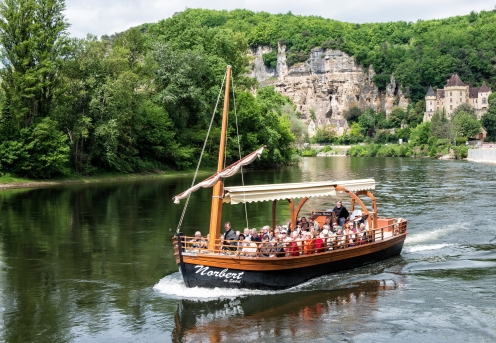









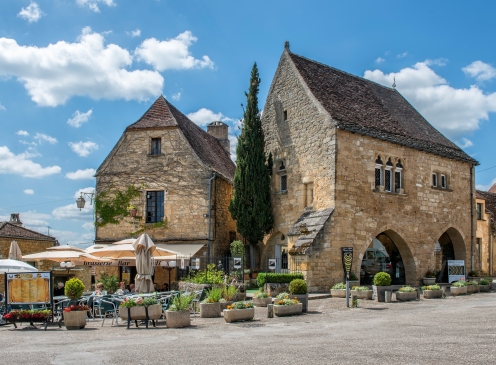


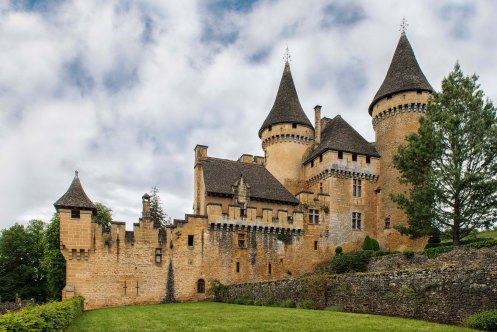

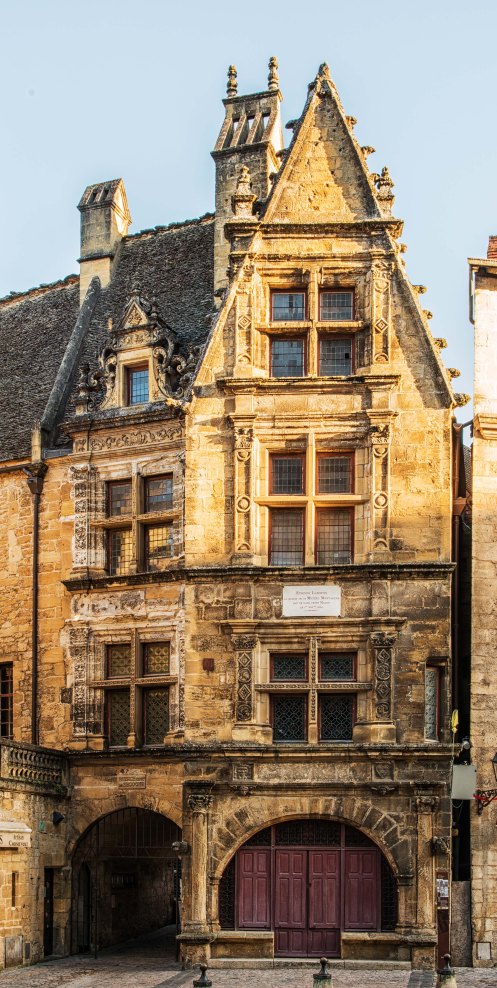




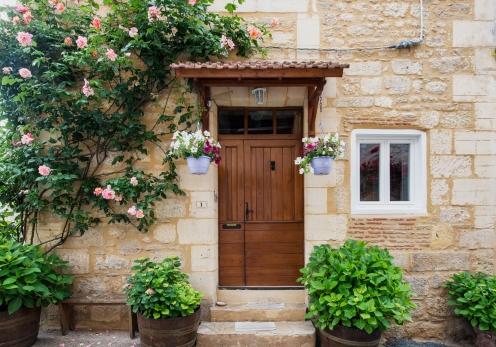



I am also a big fan of Doordogne and generally of south west of France (the not so glamorous region by comparisson with the Côte d’Azur one may say – but for me even nicer!)
Carla
http://southweststory.com/dordogne-valley-thousand-castles
Hi Phil:
What beautiful photos! Sandy and I know this region well. A few years ago, a group of friends and we rented a house in the area. Your photos are just beautiful!
regards to Margot (good French name!)
xox
Ron
Sent from my iPad
Thanks, Ron. We also rented a small house in the tiny village of Carmensac, about 2 miles from the Font de Gaume, owned by an American couple who live in another house on the property. It was a great trip (the Dordogne is a guaranteed great trip). Phil
very good post 🙂